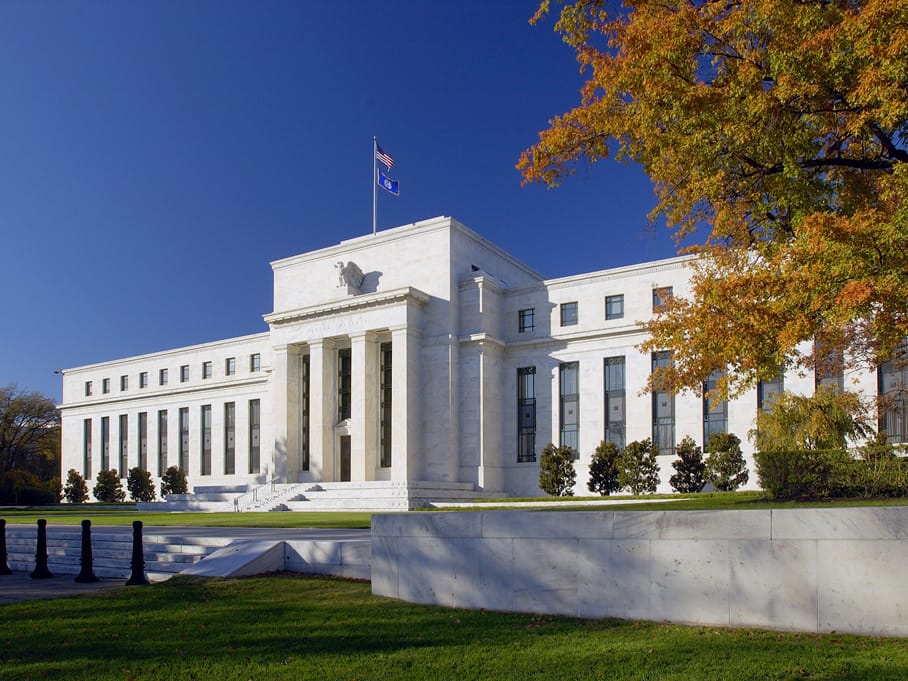As had been widely anticipated, the news that at their meeting this week, the US Federal Reserve has kept interest rates at 5.25%-5.5% for 6th straight meeting, didn’t come as any great surprise. However, market watchers and investment strategists have been carefully examining the words of Chair Jay Powell, with the outlook that US rates now look set to remain higher for longer.
Investment experts and strategists have been sharing their views on this latest US interest rate news and what it might mean for markets, stock selection and asset allocation as follows:
Salman Ahmed, Global Head of Macro and Strategic Asset Allocation at Fidelity International, said:
“The Federal Reserve kept rates on hold as expected but slowed the balance sheet run-off rate ($60 billion cap to $25 billion per month). In the press conference, Chair Powell acknowledged the stickiness of inflation but also played down the risk of hikes as the Federal Reserve committee sees policy as sufficiently restrictive.
“Our analysis suggests that the Fed tends to deliver dovish surprises on FOMC meeting days and usually pivots during intra-meeting periods on the back of data flow. We expect inflation to remain sticky as demand remains strong leading to no cuts this year. However, even if Chair Powell has downplayed the risk of hikes, narrative wars are likely to continue if current economic trends continue.”
James McCann, deputy chief economist, abrdn, said:
“Optimism at the Fed that inflation is heading seamlessly back to target has been shaken by surging price growth this year. Indeed, today’s press statement warns this progress has stalled, and that the Fed will need to see it resume before it is comfortable cutting rates. Chair Powell will likely reiterate this message at the upcoming press conference and even threaten that more bad news could torpedo the chances of rate cuts this year. However, the central bank is likely to maintain that policy is tight, implying that this will bring inflation lower with time and further rate hikes are not on the cards anytime soon.”
Richard Carter, head of fixed interest research at Quilter Cheviot said:
“The Federal Reserve has found that it has become a victim of its own success. Having supposedly achieved the notion of a soft landing for the economy, interest rates are looking like they will remain at elevated levels for considerably longer than much of the market had hoped. Today’s decision to keep them on hold and continue to wait for the data to change has become a familiar one over recent years and will result in the higher for longer narrative becoming more entrenched.
“Ultimately, the Fed is facing an economy that continues to prove remarkably robust in the face of high inflation, rising rates and slowing global growth. The labour market remains tight, and despite the persistence of inflationary trends, this is helping to drive economic growth. The consumer continues to defy external pressures.
“There have been some signs that the data is beginning to soften and the economic winds changing. This will likely mean rate cuts in the near term can remain on the table, however, there is no major red flag or alert that would cause the Fed to act swiftly. Furthermore, with the looming presidential election in November, there is a possibility that any rate cuts this year are put in jeopardy.
“The soft landing has been achieved for now, but this has only increased the clamour from markets for rate cuts. Like much of the past three years, where the Fed goes from here will be incredibly challenging.”
Tiffany Wilding, Managing Director & Economist at PIMCO said:
“The U.S. Federal Open Market Committee Meeting (FOMC) acknowledged that inflation progress stalled in the first quarter of this year, and as a result, policymakers have become less confident that inflation over time will sustainably trend back to 2%. However, Fed Chair Jerome Powell stopped short of discussing the possibility of further rate hikes. He reiterated that monetary policy is tight, and that it is unlikely that the next policy move will be a rate increase.
“Previously, the FOMC saidit would be appropriate to reduce the target range for the federal funds rate once they became more confident inflation is moving sustainably toward 2%. Inflation data received in the first quarter of 2024, should, if anything, reduce their confidence. As a result, Powell admitted the committee will wait longer before cutting rates.
“At the June meeting, when the FOMC will publish the next Summary of Economic Projections (SEP), we suspect FOMC participants will revise up their forecast for core PCE inflation to closer to 3% (vs 2.6% in March), and also revise up their projected path of interest rates. We think the median 2024 rate forecast will still reflect an FOMC expectation of at least 1 cut in 2024. However, the probability has risen significantly that they don’t cut at all. Of course, in the event that the economy weakens and the unemployment rate increases, we would expect the Fed to cut in that scenario, and cut aggressively if needed.”
Also commenting on the Fed’s decision, Isabel Albarran, Investment Officer at Close Brothers Asset Management, said: “Going into yesterday’s Fed meeting, we expected that FOMC confidence that inflation is heading in the right direction had been challenged by persistent strong CPI prints and volatile labour market data.
“This was reflected in the meeting. In the statement, the FOMC acknowledges that “in recent months, there has been a lack of further progress toward the… 2% inflation objective”. While Powell reiterated his “expectation” that inflation will fall this year, he acknowledged that “confidence in that is lower than it was because of the data that we’ve seen.” Powell also acknowledged that there could be no cuts this year, though he reiterated that hikes are “unlikely”.
“For markets, the meeting was less hawkish than feared and rate cut expectations haven’t moved significantly. For now, FOMC members are back in “watch the data” mode. June will be the next test, when new Economic Projections are published, which could lead to an upward shift in the dot plot. This could have more of an impact on markets.”
Nick Chatters, investment manager at Aegon Asset Management said: “Overall message is pretty clear, greater confidence not reached – it needs to wait a bit longer.
“From the statement there are broadly two changes. First, it hasn’t seen enough progress on inflation to cut rates yet / soon. Second, it is going to start reducing the balance sheet run off, but as expected letting agency debt run off at the expense of Treasuries.
“The message on the economy is that the consumer is strong, private demand is stronger than the Q1 GDP print suggests.
“The next move in rates being a hike is highly unlikely. It wasn’t mentioned in the prepared remarks, but rates are likely at their peak and that rates would be cut at some point this year.”
















